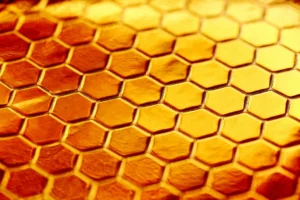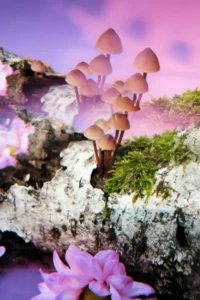Table of Contents
Manuka honey is a highly sought-after and prized honey, known for its unique properties and health benefits. However, finding high-quality Manuka honey can be quite challenging due to its limited production and specific requirements. In this article, we will explore the delicate process of making Manuka honey, the factors that make it difficult to find, and provide tips on how to choose the best Manuka honey with the desired MGO (methylglyoxal) content.
Understanding the Manuka Honey Production Process
Nectar from Manuka Flowers
The production of Manuka honey begins when the Manuka tree starts blooming, typically from mid-December to mid-January in New Zealand. The bees are strategically placed in areas with a high concentration of wild Manuka trees, allowing them to forage for the nectar from the Manuka flowers.
During this foraging process, worker honey bees visit the flowers and gather the nectar using their proboscis, a small part of their anatomy similar to an elephant’s trunk. These bees are highly efficient in collecting nectar from the flowers, and they can visit hundreds of flowers in a single trip. This behavior is beneficial to the ecosystem as it aids in cross-pollination.
It’s important to note that the collection of Manuka nectar only occurs for a few weeks each year, as the Manuka flower has a narrow blooming window. Additionally, the availability of nectar is highly dependent on weather conditions, making it even more challenging to produce Manuka honey consistently.
Back to the Hive!
Once the worker bees have collected enough nectar from the Manuka flowers, they return to the hive. At the hive, the younger bees, known as house bees, await the arrival of the worker bees to collect the honey contents. The worker bees hand over the sac of nectar to the house bees.
The house bees’ role is to process the nectar by depositing it into honeycomb cells and adding enzymes. This process involves altering the pH and several chemicals within the nectar, resulting in a mixture of nectar and enzymes. However, at this stage, the consistency of the honey is still runny and watery.
Drying the Honey
To achieve the desired consistency and preserve the honey, the bees need to dry it. The drying process involves partially drying the honey and removing excess moisture as it moves down the line of house bees working on the nectar.
Bees are remarkably intelligent creatures. They actively spread the honey over the honeycomb, increasing its surface area, much like hanging out laundry to dry in the sunlight. The movement of the bees, especially the flapping of their wings, aids in the drying process. By fanning air around the colony, they can heat it to around 34 degrees Celsius, reducing the water content and increasing the viscosity and consistency of the Manuka honey.
The incoming nectar contains about 70% water, which needs to be evaporated to around 20% or lower to transform it into honey. The worker bees will continue to fan the colony until the moisture content reaches approximately 30% to 50%. They then deposit the partially dried honey in small droplets into the hive cells, allowing it to dry further.
Making the Honeycomb
The final step in the production of Manuka honey involves sealing the honey in cells that form the unique shape of the honeycomb. Bees understand the importance of preserving honey, and they utilize their intelligence to ensure its longevity.
To aid preservation, once the moisture level reaches the targeted 20%, the bees cap each cell with beeswax. This beeswax seal keeps the honey secure until harvesting, much like putting a lid on a jar. The 20% moisture limit is crucial as it inhibits the yeast spores in the honey from hatching and surviving, preventing fermentation. Fermentation produces alcohol, which is toxic to bees, and the sugars in the honey are essential nutrients for them.
During the nectar collection and drying process, the bees add a special substance called invertase to the honey. Invertase breaks down the sugar molecules in the sucrose-rich nectar, splitting it into fructose and glucose. This “pre-digestion” of sugars by the bees allows for instant energy utilization by both bees and humans when consuming honey.
Another essential enzyme added to the honey during this process is glucose oxidase. This enzyme produces hydrogen peroxide in honey, which contributes to its antibacterial properties. Manuka honey, in particular, has additional non-peroxide activity (NPA), which further enhances its antibacterial effects. The presence of methylglyoxal (MGO) and other compounds in Manuka honey gives it its high UMF (Unique Manuka Factor) rating, indicating its antibacterial potency.
Harvesting the Manuka Honey
Once the honey is fully matured and dried, beekeepers remove the honeycomb frames from the beehives and carefully extract the honey. Commercial operations typically use centrifugal force machines to spin the frames and remove the honey. However, smaller operations may perform this process manually.
After extraction, the honey undergoes filtration and processing steps to remove any impurities, such as wax or bee parts. This ensures the purity of the honey, making it ready for consumption. The honey is then tested to determine its unique Manuka factor (UMF), which measures its antibacterial potency.
Tips for Choosing Manuka Honey with the Desired MGO Content
Now that we understand the process of making Manuka honey, let’s explore how to choose the best Manuka honey with the desired MGO content:
-
Look for UMF Certification: When purchasing Manuka honey, it is crucial to buy from a reputable brand that is UMF certified. The UMF certification ensures that the honey is pure, authentic, and unadulterated. It also guarantees the honey’s MGO content and antibacterial potency.
-
Check the UMF Rating: The UMF rating indicates the honey’s antibacterial potency. Higher UMF ratings correspond to higher MGO content and stronger antibacterial effects. Consider your specific needs and choose a Manuka honey with an appropriate UMF rating.
-
Understand the MGO Content: Methylglyoxal (MGO) is the primary compound responsible for Manuka honey’s unique properties. The higher the MGO content, the stronger the antibacterial effects. If you are looking for specific health benefits, such as wound healing or digestive support, choose a Manuka honey with a higher MGO content.
-
Consider Your Budget: Manuka honey can be quite expensive due to its limited production and unique properties. Set a budget and choose a Manuka honey that fits within your price range without compromising on quality. Remember, higher UMF ratings and MGO contents often come with a higher price tag.
By following these tips, you can confidently choose Manuka honey with the desired MGO content and enjoy its numerous health benefits.
In conclusion, Manuka honey is a remarkable and highly sought-after honey due to its unique properties and health benefits. Its production process is delicate and specific, which contributes to its limited availability and high price. By understanding the process and considering important factors such as UMF certification, UMF rating, MGO content, and budget, you can choose the best Manuka honey that meets your needs. Enjoy the goodness of Manuka honey and its antibacterial potency!



